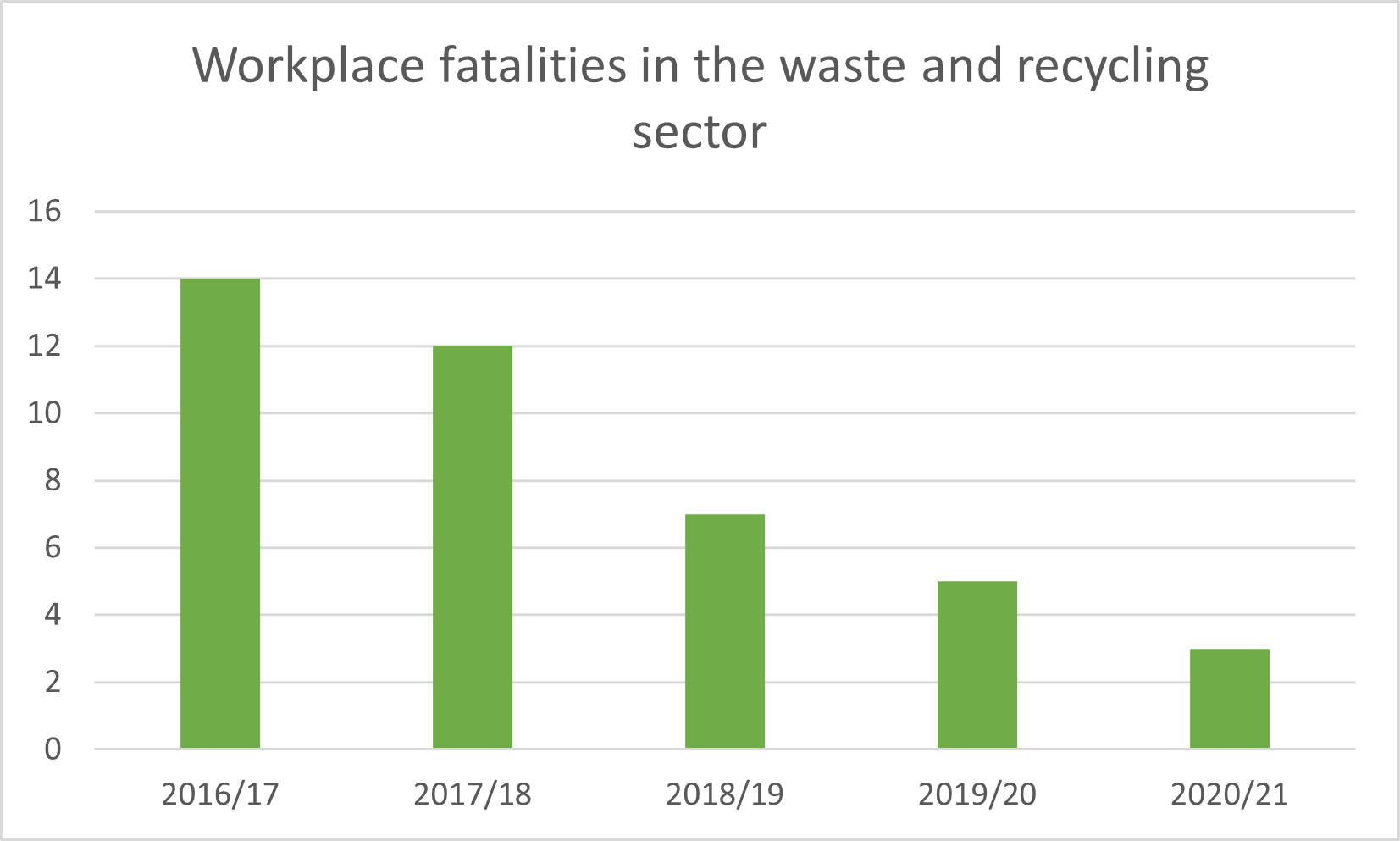The figures cover April 2020 to March 2021 and show the sector recorded two fewer deaths than in 2019/20 (see letsrecycle.com story).

Despite the drop in the number of fatalities, the sector remains relatively high-risk compared to other industries.
The rate of death remains around 17 times as high as the five-year-average all industry rate, at 7.02 deaths per 100,000 workers across the last five years.
Only agriculture, forestry and fishing recorded a greater risk of fatal injury, at 8.44 per 100,000 workers employed.
In a statement, the HSE said: “The waste and recycling sector, a relatively small sector in terms of employment, accounted for three worker deaths in 2020/21.
“While this is the lowest number of deaths in this sector in each of the last five years, numbers are small and subject to year-on-year fluctuation. This sector has one of the highest rates of fatal injury to workers.”
Covid-19
The HSE noted that the coronavirus pandemic and the government response to its impact had a “significant effect” on the UK labour market in 2020/21.
Many businesses ceased operating or changed their working practices, the HSE said, while government interventions allowed for the furloughing of workers.

Government estimates suggest that 11.5 million jobs were supported by the Coronavirus Job Retention Scheme at various times during the year.
The figures published by the HSE relate to workplace incidents. They do not include deaths arising from occupational exposure to disease, including Covid-19.
It is in the context of these challenges that the number of workplace deaths should be judged, the HSE said, making comparisons with previous years difficult.
Overall
The provisional data shows that a total of 142 workers were killed at work across all industries in 2020/21, an increase of 29 from the previous year, though the number of deaths in 2019/20 (113) was low compared to other recent years.
“We are committed to ensuring that workplaces are as safe as they can be”
The three most common causes of fatal injuries continue to be workers falling from height (35), being struck by a moving vehicle (25) and being struck by a moving object (17), accounting for more than half of the fatalities in 2020/21.
The figures also indicate the workplace-based risks to older workers, with around 30% of fatal injuries in 2020/21 involving workers aged 60 or over, even though such workers only make up around 11% of the workforce.
The HSE’s chief executive Sarah Albon said: “Whilst the working world in which we now live has created new health challenges for workers and for those who have a duty towards them, safety must also remain a priority.
“Whilst the picture has improved considerably over the longer term and Great Britain is one of the safest places to work in the world, every loss of life is a tragedy. We are committed to ensuring that workplaces are as safe as they can be and that employers are held to account and take their obligations seriously.”
Related links
Workplace fatal injuries in Great Britain, 2021











Subscribe for free